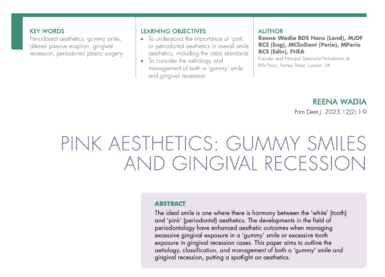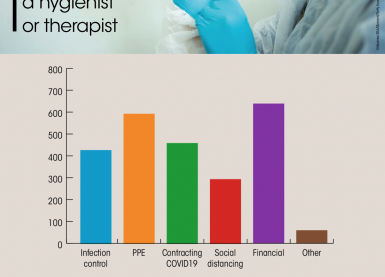
- Anaesthesia – Your local anaesthetic needle has a finite lifespan. If the needle is tethering the mucosa it’s likely to be blunt. This will be uncomfortable for the patient so replace it.
- Biology – Understand the biology of the dental tissues, as you need to manage different tissue in different ways. Enamel can be supported or unsupported and dentine may be live, sclerotic or tertiary.
- Consent – Always make your consent patient specific. The recent change in law on informed consent means we must now ensure that patients are aware of any ‘material risks’ involved in a proposed treatment and understand reasonable alternatives (Montgomery v Lanarkshire Health Board). This is a marked change to the previous Bolam test and is move away from the ‘reasonable doctor’ to the ‘reasonable patient’.
- Daughter test – In any instance where a cosmetic dilemma presents itself, Dr Martin Kelleher suggested the following ‘test’ prior to proceeding with any potentially destructive treatment plan: ‘Knowing what I know about what is involved in the long term as a consequence of this proposed elective dentistry, would I carry out this treatment on my own daughter’s teeth?’ He suggests a change in the proposed treatment plan if a negative response should be the answer. Not only does this test consider the health of the teeth and the patient in both the short and long term, it also places the responsibility of human care back into the hands of the responsible clinician.
- E.Max – This is a pressed lithium disilicate and there are 7 types. Request the high translucency subcategory. If you select one shade lighter than the natural tooth and use a cement shade one shade darker the interface will be invisible.
- Ferrule – When evaluating the remaining tooth structure, check to see if you have adequate tooth dimensions to create a meaningful ferrule.
- Get to know your patients – When the patient is telling you their story, listen with your eyes. Find out about their occupation and daily routines – this will also give you an idea of their stress levels and any issues that may affect compliance to treatment.
- Habitual position – When assessing occlusion, make a note of the patient’s habitual position as well as centric relation and excursive movements. Use articulating paper to mark on contacts. Either make a note of this or take a photograph. If your restoration involves guiding teeth, take care in reproducing the required occlusal anatomy.
- Impression – When deciding on the restorability of a tooth, ask yourself if you will be able to get a satisfactory impression. If not, then are there realistic extra measures to get an impression? If the answer is no for both, the tooth is likely to be unrestorable.
- Judgment – When assessing restorability of a tooth your judgment and emotional intelligence are imperative. Many tooth restorability indices have been developed but these are largely flawed.
General Dental
Recent post
June 29, 2023
Pink Aesthetics...
Read more
General Dental,Periodontology
June 26, 2022
10 Key Points from EuroPerio10...
Read more
Periodontology,Reena's Notes
June 11, 2021
Working as a hygienist or therapist...
Read more
General Dental,Periodontology




